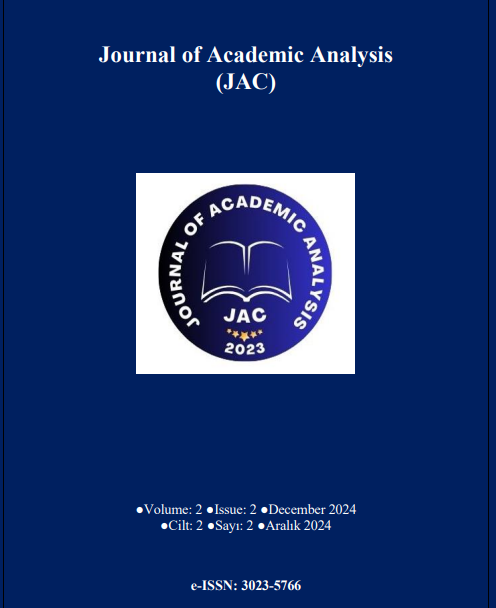Tax Evasion and Income Inequality in European Countries: An Approach with Dynamic Panel Data Analysis
Keywords:
Tax Evasion, Income Distribution, Inequality, Dynamic Panel Data AnalysisAbstract
Tax avoidance and evasion, which impose costs on rational individuals to maximize their benefits, are among the factors that distort income distribution. This study uses dynamic panel data analysis to analyze the relationship between tax evasion and income inequality in 28 European countries between 2004 and 2016. Our analysis includes tax evasion data from the European Commission on the Panama Papers report and income inequality data using Gini coefficients provided by Frederick Solt. The main objective is to examine the fairness effect of tax evasion on income distribution. The Generalized Method of Moments provided reliable estimates to account for potential endogeneity and autocorrelation issues. We find that an increase in income inequality significantly increases tax evasion. As a result, a 1-unit change in the gini coefficient is associated with an 18-unit increase in tax evasion.
References
Ait Bihi Ouali, L. (2020). Effects of signalling tax evasion on redistribution and voting preferences: Evidence from the Panama Papers. Plos One, 15(3), e0229394.
Allingham, M. G., & Sandmo, A. (1972). Income tax evasion: A theoretical analysis. Journal of Public Economics, 1(3), 323-338.
Alstadsæter, A., Johannesen, N., & Zucman, G. (2019). Tax evasion and inequality. American Economic Review, 109(6), 2073-2103.
Andreoni, J., Erard, B., & Feinstein, J. (1998). Tax compliance. Journal of Economic Literature, 36(2), 818-860.
Arellano, M., & Bond, S. (1991). Some tests of specification for panel data: monte carlo evidence and an application to employment equations. The Review of Economic Studies, 58(2), 277-297
Bessele, S., & Persson, A. (2019). Institutions and tax compliance: An empirical investigation. Journal of Institutional Economics, 15(3), 457-480.
Bloomquist, K. M. (2003). Tax evasion, income inequality and opportunity costs of compliance. Proceedings. Annual Conference on Taxation and Minutes of the Annual Meeting og the National Tax Association, 96, 91-104.
Demez, S., & Akyol, M. (2021). Ticari ve finansal açıklık ile ekonomikbüyüme ilişkisi: Gmm panel veri analizi. Iğdır Üniversitesi Sosyal Bilimler Dergisi, 10(26), 226-253.
Diamond, P., & Saez, E. (2011). The case for a progressive tax: From basic research to policy recommendations. Journal of Economic Perspectives, 25(4), 165-190.
Feldman, N. E., & Slemrod, J. (2007). Estimating tax noncompliance with evidence from unaudited tax returns. Economic Journal, 117(518), 327-352.
Feldstein, M. (2017). Underestimating the real growth of GDP, personal income, and productivity. Journal of Economic Perspectives, 31(2), 145-164.
Gini, C. (1912). Variabilità e mutabilità. Journal of the Royal Statistical Society.
Gordon, R., & Li, W. (2015). Tax structures in developing countries: Many puzzles and a possible explanation. Journal of Public Economics, 93(7-8), 855-866.
Karlsson, J., & Matthiasson, T. (2015). Tax Evasion, tax avoidance and the influence of special interest groups: Taxation in Iceland from 1930 to the Present. Nordic Tax Journal, 2, 1-17.
Lorenz, M. O. (1905). Methods of measuring the concentration of wealth. Publications of the American Statistical Association, 9(70), 209-219.
Mirrlees, J. A. (1971). An exploration in the theory of optimum income taxation. The Review of Economic Studies, 38(2), 175-208.
Piketty, T., Saez, E., & Zucman, G. (2018). Distributional national accounts: Methods and estimates for the United States. The Quarterly Journal of Economics, 133(2), 553-609.
Saez, E., & Stantcheva, S. (2016). Generalized social welfare weights for optimal tax theory. American Economic Review, 106(1), 24-45.
Scholz, J. T., & Pinney, N. (1995). Duty, fear, and tax compliance: the heuristic basis of citizenship behavior. American Journal of Political Science, 39(2), 490-512.
Şengül Çelikay, D. (2019). Muhasebe perspektifinden vergiden kaçınma kavramı. Muhasebe ve Vergi Uygulamaları Dergisi, 12(2), 353-376.
Slemrod, J., & Weber, C. (2020). Evidence from a large-scale field experiment on tax audits. American Economic Journal: Economic Policy, 12(3), 312-346.
Solt, F. (2020). Measuring Income Inequality Across Countries and Over Time: The Standardized World Income Inequality Database. Social Science Quarterly, 101(3), 1183-1199.
Tatoglu, E. (2013). Panel veri ekonometrisi (2nd ed.). Istanbul: Beta Yayınları.
Theil, H. (1971). Principles of econometrics. Wiley.
Torregrosa-Hetland, S. (2020). Inequality in tax evasion: the case of the Spanish income tax. Applied Economic Analysis, 28(33), 89-109.
Vellutini, C., Casametta, G., Bousquet, L., & Ponlatowski, G. (2019). Estimating international tax evasion by individuals. Retrieved from Luxembourg.
Downloads
Published
How to Cite
Issue
Section
License
Copyright (c) 2024 Journal of Academic Analysis

This work is licensed under a Creative Commons Attribution 4.0 International License.



